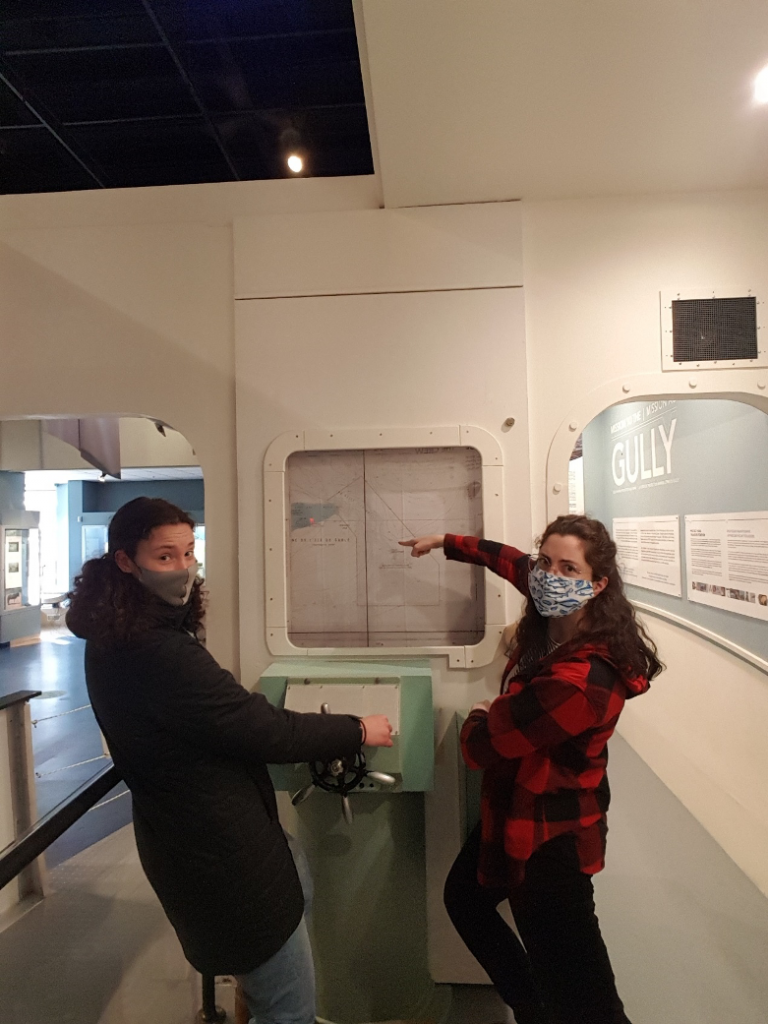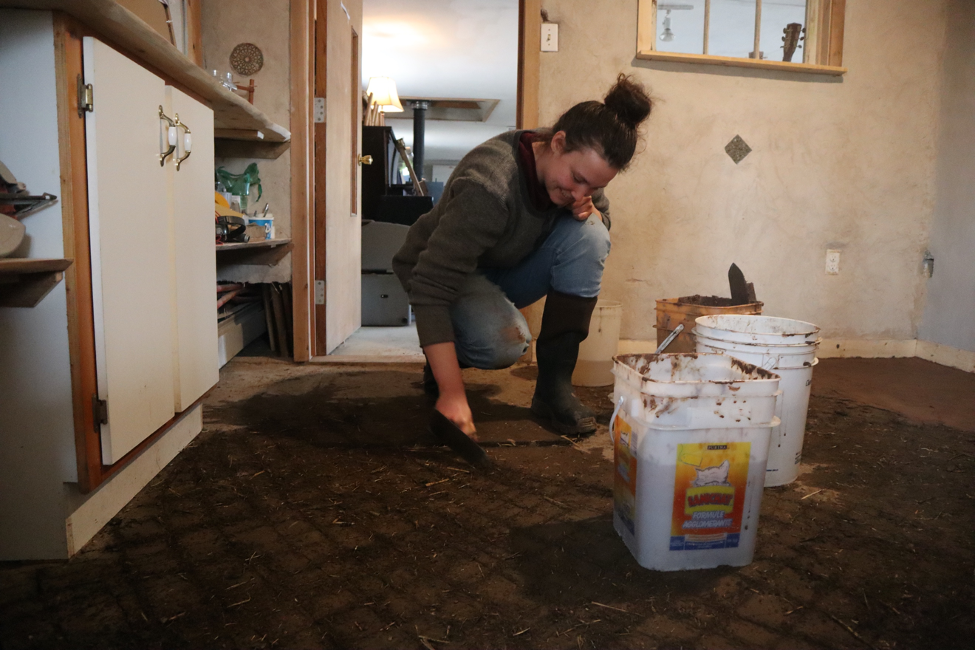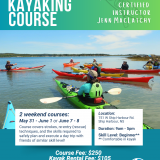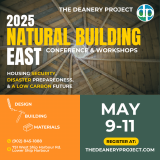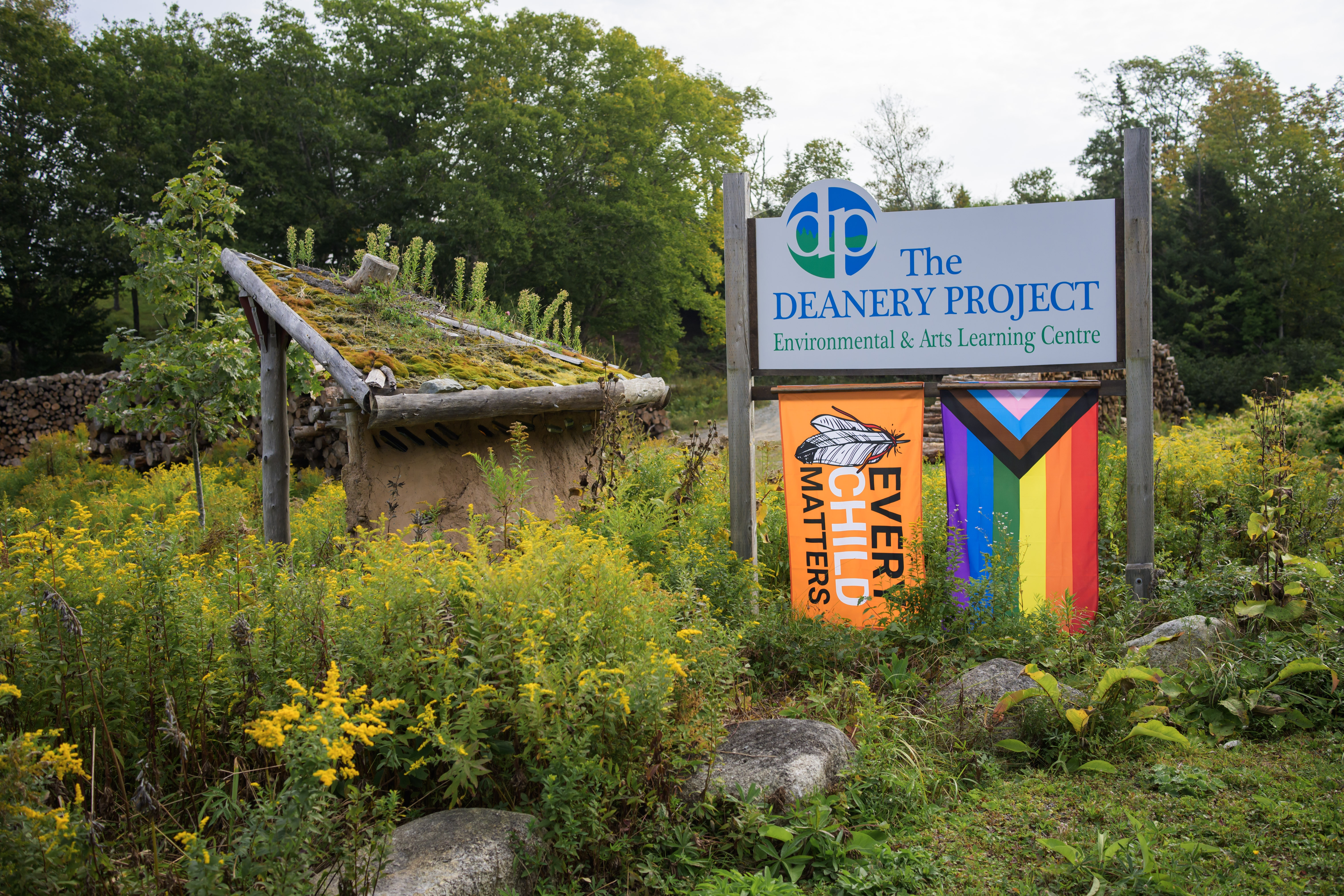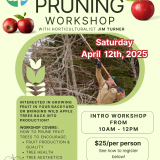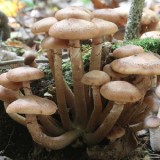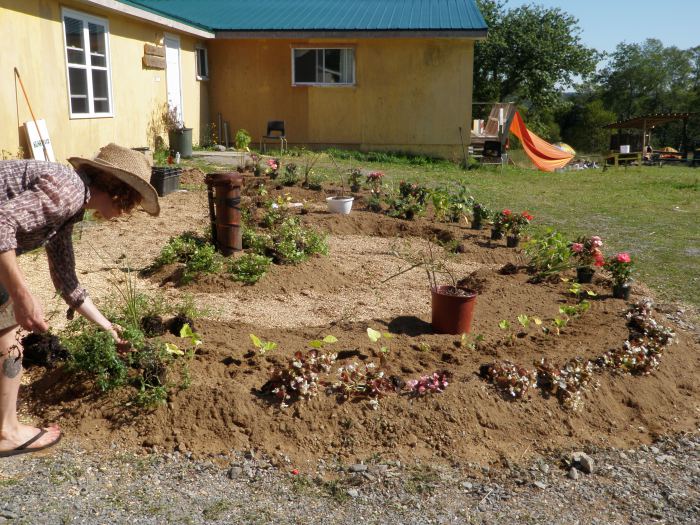What Can I Learn from my Neighbour?
Direct Action Blog Post by Michelle Matson, Ocean Bridge Intern, on her time at The Deanery Project
It is amazing to me that two people can be in the exact same place at the same time and see the landscape in completely different ways, just because of what they know and how they learned it. When I see a maple tree I look for the flowers, seeds, buds, and leaves in an attempt to understand what species I’m looking at, whereas someone else might see how they will draw the collage of lichen covering the bark, and yet another person might see the makings of a beautiful dining room table. Then someone new could come by with their maple sap bucket and view the same tree as a source of syrup for pancakes. Every time I step outside my comfort zone and challenge myself to learn something new, I get the opportunity to see that maple tree from a new perspective.
Education is about gathering different lenses through which to view the world around you. And yes, you can do that by all the traditional methods like university, trade school, or art school. But you can also do it by learning from the people and the land sitting right next to you. That is what The Deanery Project is all about. The Deanery is an arts and environmental learning centre that brings people together from all corners of the community. The centre gathers all ages of activists, builders, fishermen, artists, and scientists to pose the question “How can we learn from one another?”
My background is in ecology and environmental studies, and something I have always appreciated about this field is that, while some of the experts are professors with PhDs and years of research experience, many of the most knowledgeable teachers are naturalists and Indigenous elders. People who have intentionally observed the natural world for so long that they already know things that science has yet to discover. Institutions that facilitate teaching from these people with such a wealth of lived experience can be hard to come by. This is one of many reasons why The Deanery Project is such a valuable resource for communities on the eastern shore of Nova Scotia.
When I found out about the people who banded together ten years ago to transform an old rundown church camp into a welcoming community-based educational space, I decided that I needed to get to know these people better. My goal was to learn three skills from the vast network of people who support The Deanery Project, but after my three-month placement I have come away with so much more than that.
One of the focus projects I worked on while at the Deanery was designing workshops for the March Break Teen Camp. I always thought that keeping a group of thirteen- to seventeen-year-old students engaged in learning something new for three hours straight would be about as hard as it sounds. But Charles, the program director at the Deanery, made it look easy. He showed me that if you design workshops using a framework that engages people with the material in different ways then they can take away more from the experience. The framework I liked the most was using the four elements: Fire, Water, Air and Earth. Fire represents action and physical movement, water is emotional connection, air is made up of thoughts and ideas, and the earth is the ground under our feet as we live and experience it all. No matter what the point of the workshop is or what material you are trying to get across, if you can use a couple of these elements, it creates an experience that is more meaningful and sinks in a little deeper.
For one of the March Break workshops that focused on upcycling and repurposing trash, I partnered with a local artist, Jennifer MacLatchy (@jennifermaclatchy), who makes beautiful woven baskets, rugs and other art pieces out of marine garbage. Jenn spends much of her spare time kayaking the eastern shore of Nova Scotia, collecting all kinds of garbage that washes up on the shore and turns it into something both beautiful and useful. We went out kayaking together and I didn’t even see half the garbage before she pointed it out. Once I started to think about garbage as something other than worthless, suddenly I saw it everywhere on the local beaches. What I saw before as washed up seaweed, I recognized now as seaweed intertwined with discarded fishing nets. I have never imagined myself as an artist, but after spending a few months at the Deanery learning from Jenn, I found myself with a paint brush in hand repurposing a discarded bike wheel into a wall clock.
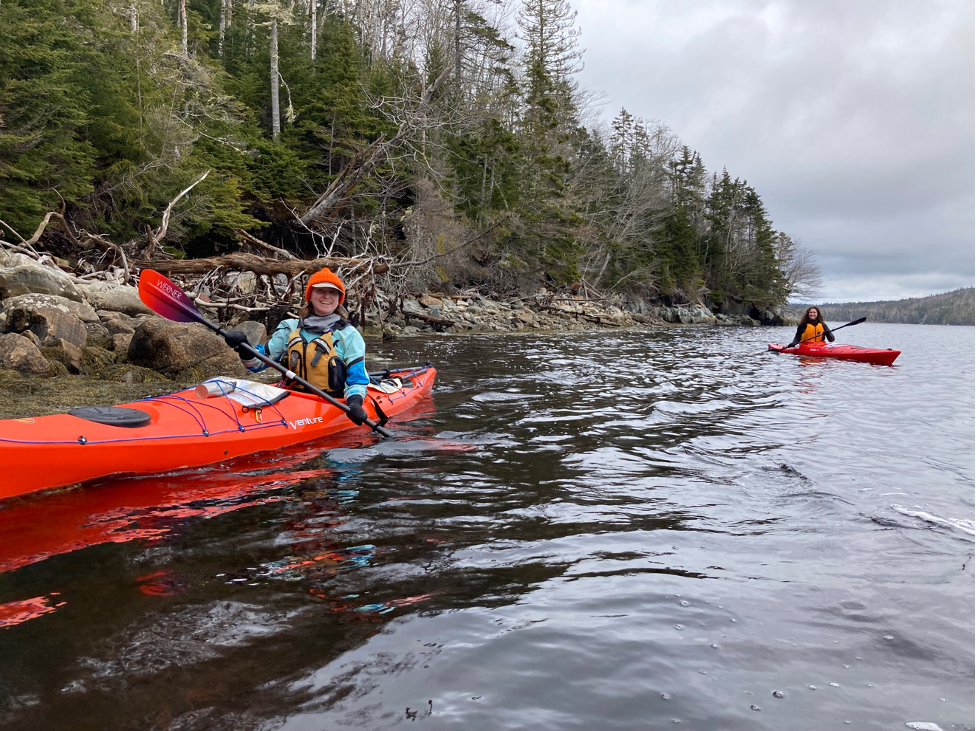
Another amazing wealth of knowledge that I met at the Deanery was Nat, the chef and caterer who manages the kitchen for all the events on site. She has worked in the industry for over 30 years, owned several successful restaurants, and she can bake a pie in about the amount of time it takes me to chop a carrot. I spent a lot of time poking my nose in the kitchen whenever Nat was working, mostly because whatever she was cooking always smelled amazing. Every time I did, she had a new piece of advice on how to avoid over-mixing my pie pastry, properly chop vegetables, or make a kickass salad dressing. All of the recipes she shared with me are safely tucked away in my recipe book and I plan to use them for many years.
One of the people I am most grateful to have met at the Deanery is Lynne, who might actually be a superhero because she taught me how to turn the heel knitting a sock. My friends back home constantly make fun of me saying that I am secretly ninety years old, in part because I’ve always loved knitting. When I was younger my great grandma taught me how to make a bookmark using a simple knit stitch, then I joined the Knitting Ninjas in high school. Whatever you are imagining the Knitting Ninjas are, it was actually ten times cooler than that. But over the past four years of my undergraduate degree, I haven’t had the brain space to even consider some of the creative outlets that I used to love. For the first time in a long time, living at the Deanery I had the space and inspiration to be creative. I decided I wanted to knit socks. Luckily it just so happened that Lynne lives just down the road from the Deanery, owns Sheep’s Clothing, a heritage knitting business, will exchange knitting lessons for pie and on top of all that has the most adorable border collie I have ever seen. Before I knew it, I was halfway finished a sock. After three tries when I finally managed to turn the heel, I was so excited that I did a little dance, jumped up and one of those fist pumps that golfers do when they just made the winning putt.
Of course, I can’t forget everything I learned from people whose names end in “-im”. Kim made me reimagine the ways it’s possible to build a house. As the executive director of the Deanery, her expertise in natural building has infiltrated every corner of every building on the property. The natural paints and plasters in the Main Hall and the entire buildings constructed from local dirt, wood and straw are a physical representation of the Deanery’s commitment to live lightly with the land. Kim let me help mix literal dirt to build a functional earth floor in the Deanery’s sound studio. Then there’s Tim, who shared some of the fascinating research he conducted during his long career working for Department of Fisheries and Oceans Canada and opened my eyes to some of the detrimental effects of open pen fish farms on our ecosystems. Jim taught me that if you poke a hole in a maple tree, ready-made maple syrup doesn’t just come running out. It turns out that maple sap is actually just water with a high concentration of sugar and you have to boil down 40 gallons of sap to get 1 gallon of syrup. I went from knowing nothing about maple syrup to tapping trees, collecting sap, and making my own.
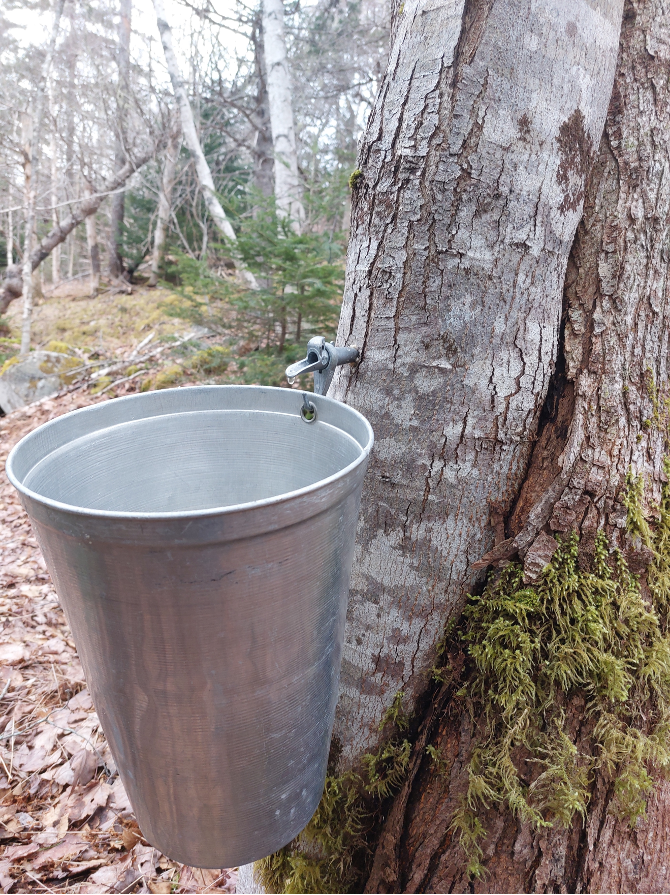
One of the red maple trees (Acer rubrum) that we collected sap from during Jim’s maple tree tapping workshop.
It’s hard to believe that over the course of only three months I connected with such a diverse group of people and gained so many new perspectives. I can only imagine what I could learn if I was here for much longer. The difference between my experience here at the Deanery and my regular everyday life is that here, I was spoon fed opportunities to connect with a new community who had experiences entirely different from my own.
With things like technology, pandemics, or even political and social differences getting in the way, it can be so easy to isolate yourself, to walk by strangers on the street without smiling or saying hello. It’s easy, until you realize that there is someone living within one kilometer of you who could teach you that thing that you have always wanted to learn. Or that you have a skill that could brighten the day of someone living right next-door. If the Deanery Project has taught me one thing, it’s the importance of the questions, “What could I learn from my neighbour? And what could they learn from me?”
